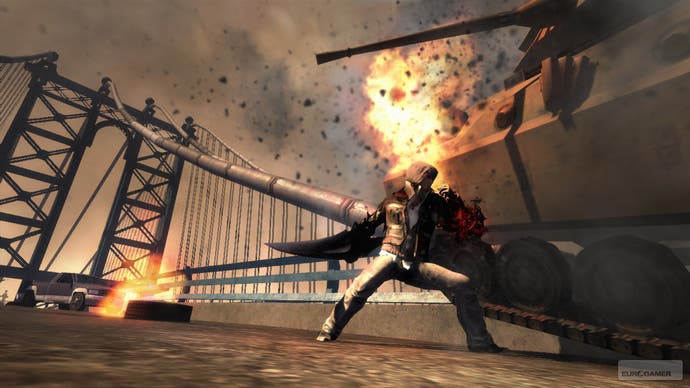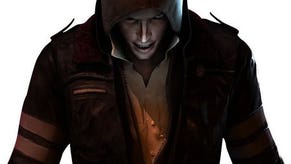Prototype
Consume and become?
Mission design isn't very open-ended, usually boiling down to doing something violently or stealthily, but with such a vast array of attacking options you often have the luxury of trying something different. There are certain missions that follow strict prescriptions - fly here, chase this guy, consume these fellas, etc. - but many throw you into combat against a combination of foes, plucked from the menagerie of infected enemies and the bottomless garrisons of the oppressive army, and use positional and locational variation to force you to experiment. If you find yourself bouncing off, it probably means it's time to explore those upgrade menus again.
The niggling thing about this, however, is that the reason you can't slip into comfortable rhythms isn't that the game is outthinking you; it's because it's out-spamming you, and the recovery systems at your disposal are puny next to your offensive powers. As soon as the military is onto you, you're in a blizzard of bullets, supported by a monsoon of rockets from helicopters, tanks and rooftop rocket launchers, while the tougher infected enemies have a habit of pouncing and going into unblockable frenzies once you've had a few pops.
So you're going to take damage, and while there are upgrades for health regeneration speed, maximum health and aerial recovery to unlock, they are all ineffective against the relentless onslaught of your adversaries, who are increasingly difficult to evade. In theory you can alleviate some of the difficulty by targeting soldiers who are calling in strike teams (chopper and tank units that hound you across the city), but getting to them in time is almost impossible because it involves navigating into the maelstrom. Snacking on human health-boxes is rarely as simple as all that either - they may be everywhere, but pausing to eat one generally earns you a rocket in the face.
Of course, with an open-ended upgrade system, difficulty spikes are inevitable, and it often pays to calm down and scrounge your own new resources to fight back. But certain key upgrades are withheld - bound to particular narrative events - while the boss fights scattered throughout the game are wars of attrition. One towards the end, in Times Square, is just appalling - nearly half an hour of slog against a Who's Who of what not to program: flying blobs that stun, respawning tentacles, unpredictable wave attacks, and inconsistent damage conditions among them.

You can at least gain the vital experience points you need to bulk up by taking on side missions, but these are also rather forgettable, reflecting a rather dull Manhattan in general. Radical includes Crackdown-style orbs, but the poor draw distance means you stumble onto them rather than really discovering them, and while people with "Web of Intrigue" icons can be consumed for another little snatch of video, the snatches of video aren't really very interesting. Mercer's linked to the virus, which is linked to a town in Idaho and a dodgy military unit. We get it.
Prototype isn't really a game of exploration though. It's also less visually striking and varied than last month's inFamous, and less stylish than Crackdown. But, again, neither is really a criticism. Prototype is a game of riotous, gore-splattering ultraviolence. That's all it wants to be, and in many respects it does a solid, and often spectacular job. The victims may be plot, atmosphere and the difficulty curve, but then great power always comes at a cost.









